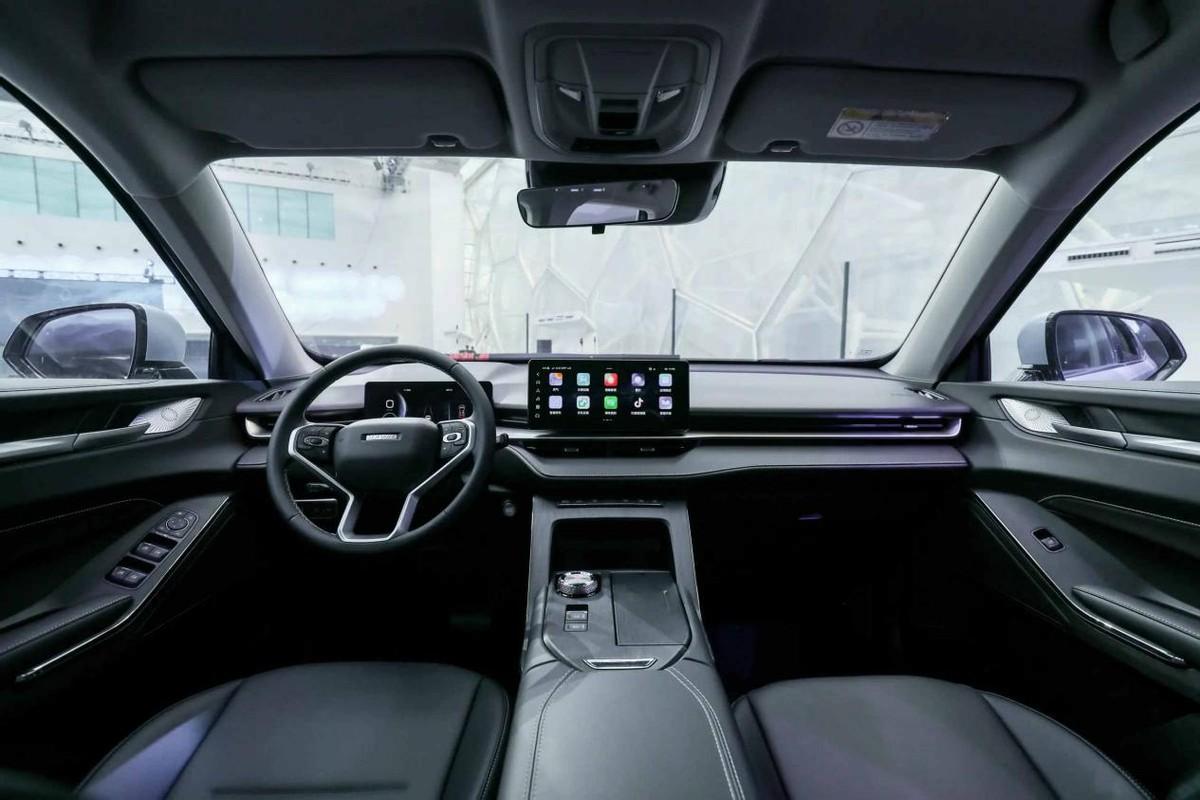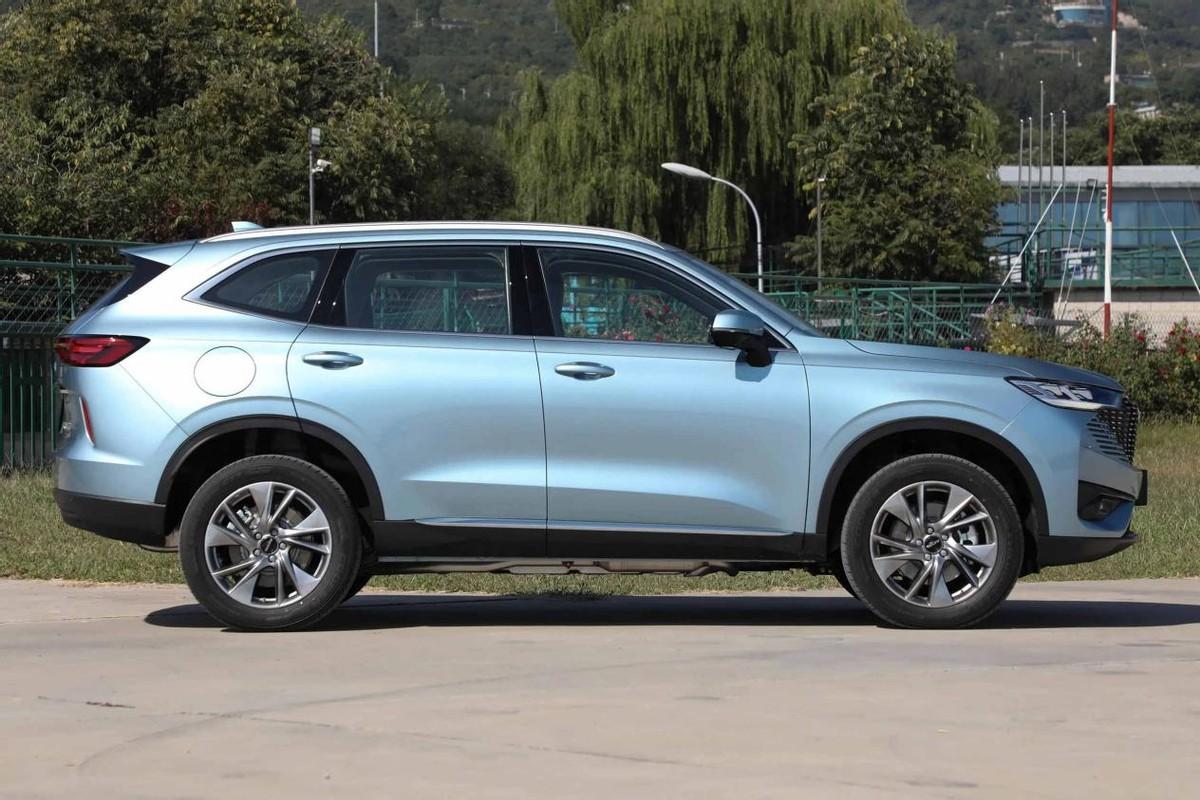In the process of track switching, some people enter the game in advance, some people kill halfway, and some people realize afterwards. On the track of transitioning family SUVs to new energy, the Haval brand is not considered an early entrant, but it has quickly kept up with everyone's pace. The arrival of the third generation Haval H6 DHT-PHEV proves that it still wants to get a piece of the pie in the new energy era. However, it is not easy to stand out by just being cost-effective in entering new energy, it is still hard to make users accept it without some reliable technology. So how does the third generation Haval H6 DHT-PHEV perform?
The third-generation H6 DHT-PHEV has three models, with a NEDC combined electric range of 55 km and 110 km the core difference between the three models is the battery range and the charging method, with the two Yuexing versions only supporting slow charging and the smooth version with fast charging. Today we will mainly focus on the 2022 1.5T DHT-PHEV 110KM Yuexing version, which is the mid-range model.
First of all, let's take a look at the static performance of the third generation Haval H6 DHT-PHEV.
The front area is the style of the grille and the shape of the logo, the dot matrix borderless design of the grille, visually forming a strong impact effect. Careful friends will also notice that the third-generation Haval H6 DHT-PHEV's logo looks flatter, while the base color has also turned into a blue color that can reflect the new energy elements. As for the headlight area, the new vehicle is equipped with LED automatic headlights with adaptive high and low beam function, which is in line with the mainstream performance.
On the side, the shape of the third generation Haval H6 DHT-PHEV is still of the thick and calm type, but its body waistline is still sharp enough, and with the multi-spoke wheels, it makes the side of the body have a stronger sense of style. In terms of dimensions, the third generation Haval H6 DHT-PHEV has a length, width and height of 4683x1886x1730mm and a wheelbase of 2738mm, which is also a conventional level in the same class.
The design of the rear of the new car is relatively conservative, the running tail light is following the trend, but the overall shape is not very special. The rear surround is designed with hidden tailpipe, and with the angular diffusion kit, it is also considered to enhance the sportiness of the vehicle.
On the treatment of the interior, the third generation Haval H6 DHT-PHEV uses the more common symmetrical design and more horizontal lines inside the car. The advantage of this design is that it can fit the aesthetics of users of different age groups, but at the same time it lacks some personality.

The 10.25-inch full LCD instrumentation and 12.3-inch center screen is also a more common rectangular design, the system UI design is relatively simple and uncomplicated to operate. In addition to supporting the vehicle settings, there are also common APPs such as AQIYI, AMAP and TikTok, and the application store also supports the expansion of other applications, which can basically meet the needs of daily car use.
Other features and configuration, the practicality of wireless charging of cell phones, remote start, electric folding of the exterior mirrors and locking automatic folding, rain-sensing wipers, etc. are equipped. The L2 level driving assistance configuration, front and rear parking radar, 540° panoramic image and other configurations that novice drivers and female drivers are more concerned about are also present in it one by one. Combined with the car's guide price of 169,800,000, it is still relatively sincere.
It is a pity that the third generation Haval H6 DHT-PHEV is only equipped with power adjustment for the main driver's seat, but the good thing is that the seat heating function is available for the front seats, which can come in handy for winter travel. In terms of riding space, for example, after a 180cm tall experience person sat in the main driver's seat and adjusted to a comfortable driving position, he still had 1 fist of head space left. After coming to the second row, the head space is 4 fingers and the leg space is 2 fists.
The practical part, the third generation Haval H6 DHT-PHEV continues the advantages of the ordinary version. The entire trunk volume is spacious enough and the interior is relatively tidy, so large items for daily use can basically be stored, while the third generation Haval H6 DHT-PHEV is also equipped with an electric rear tailgate and electric rear tailgate position memory function, further enhancing convenience.
After seeing the static performance of the third generation Haval H6 DHT-PHEV, let's continue to look at its dynamic performance. The third generation Haval H6 DHT-PHEV belongs to the plug-in hybrid model, and the vehicle is equipped with an intelligent DHT system, the whole system consists of a 1.5T hybrid-specific engine, dual electric motors, two-speed DHT and core-guard A battery.
Official information shows that the 1.5T hybrid-specific engine adopts Miller cycle technology and the electric turbocharger has been upgraded, with a maximum power of 113kW and a maximum torque of 233N-m; the dual motors include a generator and a drive drive motor, with a maximum power of 130kW and a maximum torque of 300N-m. The engine and dual motors are transmitted through a two-speed DHT gearbox, and the whole The maximum power of the system can reach 240kW and the maximum torque is 530N-m.

One of the more innovative points of this system is the two-gear dual-electric mechanism. Compared with the single-gear series-parallel architecture, the two-gear design allows series-parallel connection to switch more intelligently, so that the engine and power battery energy management is optimal. The data shows that the 0-100km/h acceleration time of the third generation Haval H6 DHT-PHEV is 7.8 seconds, and the WLTC feeder fuel consumption is 5.6L/100km, while the vehicle is equipped with a core protection A battery capacity of 19.94kWh, with a NEDC range of 110km and a slow charging time of 2.6 hours, all the data is quite good.
After driving it, you can feel the difference. At the initial starting stage, the third generation Haval H6 DHT-PHEV is basically in EV pure electric drive mode, the drive is mainly done by the electric motor, so the start is relatively light and fast and the noise is relatively low. After the speed reaches about 60km/h, the engine will start to participate in the drive, and the engine noise starts to appear slowly; when accelerating sharply, the engine and the electric motor will work together to participate in the drive, and the whole power connection is quite smooth, and the vehicle speed up is also obvious; in the high-speed stage, the range of engine participation in the drive is larger, and the overall feeling is similar to driving a traditional fuel car.
Summary.
In terms of technology alone, the intelligent DHT system of the third generation Haval H6 DHT-PHEV is considered a relatively mainstream type at present, and has no disadvantage compared to BYD' s DM-i and Changan's iDD. As I mentioned earlier, this system is still characterized by a high-efficiency engine and a two-speed dual-motor configuration. And the energy-saving effect it brings is also relatively obvious, plus its price is not much different from the competition, configuration, space and nothing to pick on, then I think this SUV is still worth considering.







